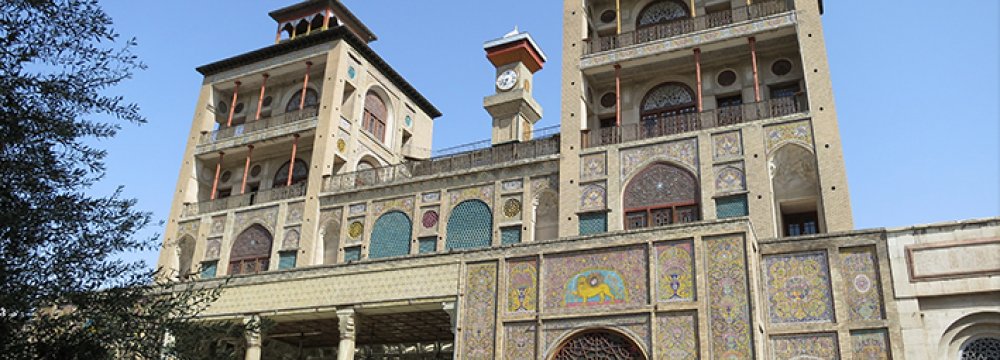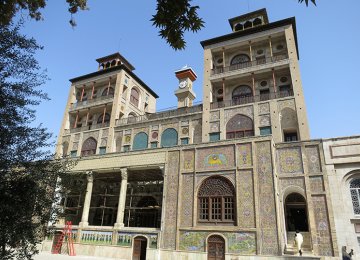Tehran, the country’s capital is described by an Iranian historian, as a city “with a long history and a short memory.” Today’s sprawling metropolis has a patchy past with many false starts, subdued by its more historically prominent neighbor the City of Rey or Rhages, the ancient capital city of the Medes, a settlement which began in 6000 BCE.
Tehran was forced into prominence in 1778 when it emerged as the capital city of Agha Mohammad Khan, the first king of the Qajar dynasty.
The discomfort of its inhabitants with this enforced modernity is best depicted by Ja’far Shahri, a Tehran chronicalist,in his description of the Clock Tower of Shams Al-Amare.
The Shams al-Amare is among the first of the modern buildings of Tehran, and is one of the most stunning structures of the Golestan Palace. It was commissioned by Nasser al-din Shah prior to his planned tour of Europe. The shah wanted a tall structure for his realm, inspired by images he had seen of the high-rise buildings of Western cities. The building defined by its height, was completed in 1867, designed by Moayer ol Mamalek and built by Ali Mohammad. The building has two identical towers and is a fusion of Persian and European architecture. The king, it is reported, enjoyed standing high on the rooftop watching the city beneath his feet.
The Clock, an emblem of Modernity
A clock tower, which was a gift from Britain’s Queen Victoria, was mounted on the roof between the towers. It was to help the city’s residents to always tell the time, another measure of progress.
The trouble was the inhabitants were less than impressed by this emblem of modernity. The loud sound of the bells, which echoed all over the small city, frightened them so much, that the government was eventually forced to muzzle the sound by wrapping the bell in heavy fabric.
This tinkering with the clock’s functioning caused it to fail altogether, but by that time, the clock tower was already part of an urban legend; its nooks and crannies, people said, had become home to three stray owls, owls being omens in the common perception of Iranians. The three owls so the story went, only emerged from their hideout when something ominous was about to happen.
Instead of the clock becoming the tool for quantifying time, a preoccupation of modernity, Tehran’s first public clock was a public nuisance and the locus of the occult beliefs of the inhabitants.
The clock remained silent for over one hundred years, until two years ago, in 2012, when it was eventually repaired and started to gong once more, but this time the sound of the bell is being drowned out by the massive City’s own roar.





